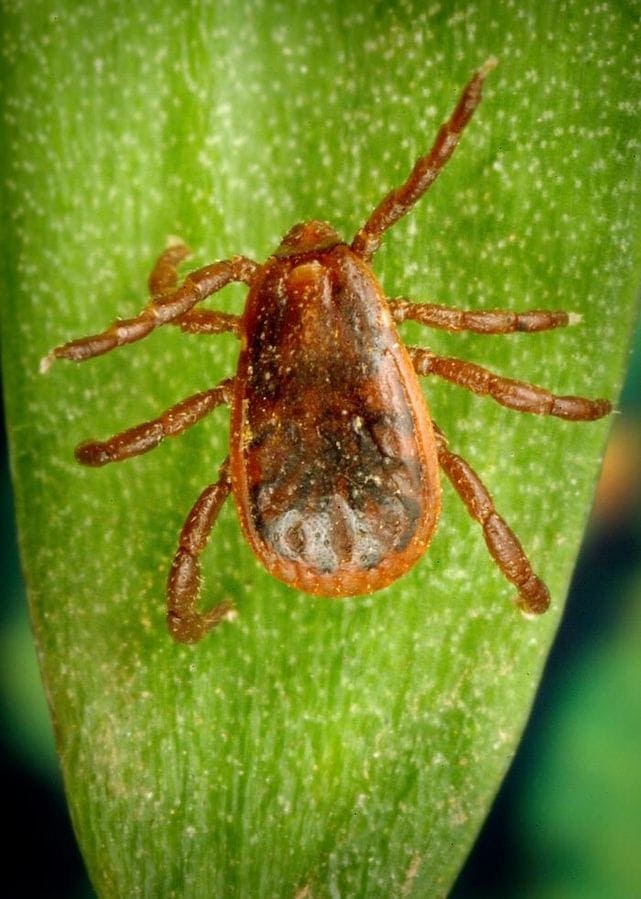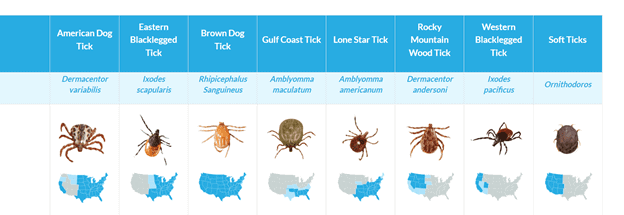Most pet owners are well aware of the risks that ticks present to dogs. Pet owners who regularly take their dogs on hikes or walks in or near tick habitats (such as wooded areas or trails near tall grasses) are advised to perform tick checks on their pets after such outdoor activity.
But ticks aren’t only a threat on nature trails. Different tick species have different habitats, and more and more ticks are being encountered by both humans and pets in suburban areas – one study found that gardening and yard work was the most common way people came in contact with ticks. One tick species that tends to infest human dwellings is the Brown Dog Tick, so named because its preferred host is the domesticated dog.
Keep reading to learn about Brown Dog Tick diseases, habitats, characteristics, and more.
Brown Dog Tick Basics
Brown Dog Ticks, known officially as rhipicephalus sanguineus, are a species of hard tick found all over the United States but especially in Southern states. Unlike many other species of hard ticks (including those that spread Lyme), which live mostly in wooded or grassy areas, the Brown Dog Tick is known to infest human dwellings, especially where dogs live – both indoors and in or around kennels. Brown Dog Ticks can infest both homes and structures as well as dogs themselves.

Are Brown Dog Ticks dangerous to humans?
The Brown Dog Tick gets its name from the fact that it prefers to feed on dogs. However, in the absence of canine hosts, Brown Dog Ticks can and will feed on humans. This is dangerous since, like other tick species in the U.S., Brown Dog Ticks carry diseases that are harmful to both dogs and humans.

What diseases are spread by the Brown Dog Tick?
As mentioned, Brown Dog Ticks can spread disease to both dogs and humans at multiple stages of the life cycle, particularly Rocky Mountain Spotted Fever (Rickettsia rickettsii). This disease is dangerous to both humans and dogs and can even be fatal.
At both the nymphal and adult stages, the Brown Dog Tick can also spread canine Ehrlichiosis and canine Babesiosis to dogs.
Can you get Lyme disease from the Brown Dog Tick?
The Brown Dog Tick is not known to carry Borreliae, the bacteria that cause Lyme disease. Though dogs can contract Lyme disease, they do so from the Eastern or Western blacklegged ticks, also known as deer ticks.

Can disease spread from dogs to humans?
No – if your dog contracts a tick-borne disease from a tick bite, the dog cannot spread the disease to you. Tick-borne disease in humans is transmitted only through a tick bite from an infected tick.
That said, it is possible for an infected tick that has hitched a ride on a dog to detach and then feed on (and infect) another host, including humans. Apart from protecting your dog from disease, this is another reason why it’s important to check dogs for ticks and prevent tick infestations on dogs and in dog dwellings.
Learn more about dogs and tick-borne disease in our Tick Talk article on the subject.
Are there other ticks that prefer to feed on dogs?
Disease can also be spread to both dogs and humans from the American Dog Tick, another hard tick species. Despite its name, adult female American Dog Ticks commonly feed on humans and can transmit both Rocky Mountain Spotted Fever and Tularemia. These ticks are mostly found east of the Rocky Mountains and in certain parts of the Pacific Coast, including California.

Protecting Yourself from Tick Bites
Tick-borne diseases are a public health problem that continues to increase. While most of these illnesses can be treated (with antibiotics, in many cases), limitations in tick-borne disease testing create barriers to accurate and timely diagnosis, leaving all too many patients to suffer preventable complications from untreated infections.
The best way to avoid contracting a tick-borne disease is to protect yourself and your pets from tick bites in the first place. Follow the tips below to keep yourself, your family, and your pets safe:
- Avoid tick habitats during outdoor activity.
- Check the areas around your home for tick infestations, especially if you have dogs.
- Always check for ticks on yourself, your children, and your pets after outdoor activity.
If you do find a tick on yourself, a family member, or a pet, remove it immediately using safe tick removal procedures. If possible, save the tick for testing, which can help with general tick surveillance and alert you to any potential disease exposure. IGeneX can test Brown Dog Ticks.

Tick-Borne Disease Testing
Successful treatment for tick-borne diseases starts with accurate, timely testing. Learn more about testing for Lyme, Tick-Borne Relapsing Fever, and other tick-borne diseases with IGeneX.








